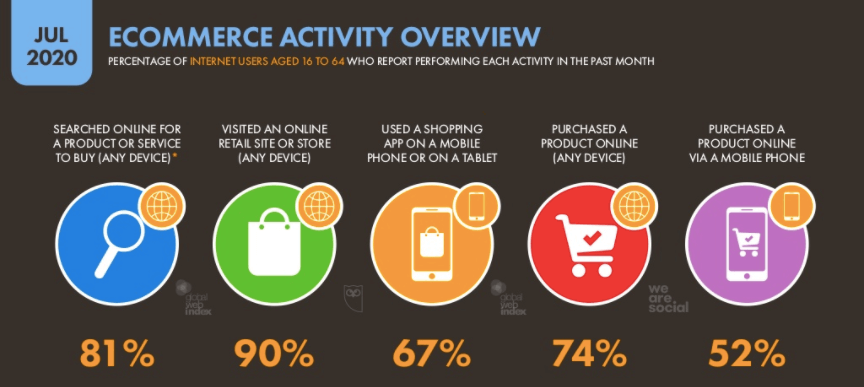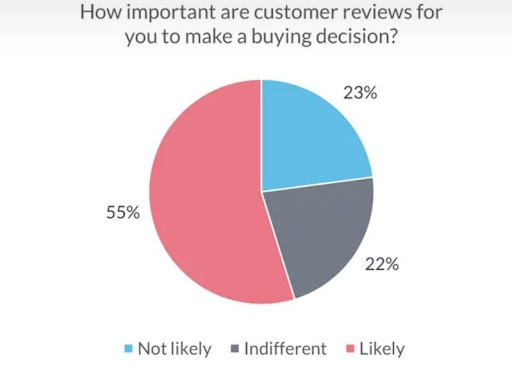The world of eCommerce can be a rewarding one, online sales have been increasing for years, and global events led to a further rise through 2020 and 2021. While there were unique factors contributing to that rise, the supremacy of online shopping is here to stay.
But with increased opportunities comes increased competition. If you operate an eCommerce business or eCommerce website, it’s essential you do all you can to boost visibility and sales. You could adopt a powerful AMP and SEO strategy or find high-quality new products and services.
Another step that can be just as important is running a competitive product analysis. Conducted correctly, it can be as rewarding as a well-thought-out marketing or retargeting strategy. But many eCommerce companies fail to take advantage of this powerful tool in their armory. If that sounds like you, don’t worry! Our guide will show you exactly what competitive product analysis is, and how you can make the most of it.
What Is Competitive Product Analysis?
Carrying out a competitive product analysis can be a simple process, and yet the benefits it brings can be far-reaching. They are ideally suited to eCommerce companies, although they can also prove invaluable to businesses in all sectors and of all sizes.

Competitive product analysis means examining how your main business rivals operate. How does this compare to your own business? Typically, the analysis will consider three key areas within this competitor company:
- their product range
- their sales and marketing strategy
- their retail income and online presence
The extra data means that you’re not only looking at your own strategy and results, but those of others operating in your eCommerce or business field.
Along with eCommerce automation, this competitor analysis can be one of the keys to growing your business on a sustainable basis.
Which Competitors Should You Analyze?
The first stage of competitive product analysis is to decide which companies you are going to carry out the analysis upon. Knowing your field, and the big and small players within it can give you a head start in this task. Gaining knowledge of your sector is something all business leaders should strive to do. Businesses can leverage the power of ad analytics to gain invaluable insights and data on their product marketing strategy.
When carrying out this analysis, you don’t want to concentrate on one competitor only. Either you want to cast your net too widely. This could result in so much data that the trends and important statistics get lost in the noise.
It makes sense to undertake analysis on businesses within your eCommerce sector, but choose ones with varying characteristics. Ideally, one should be the main player in your sector, so you can find out what strategies could also apply to your business. At the other end of the scale, it can be rewarding to look at smaller businesses with innovative strategies. You could also check out new businesses disrupting the market.
Four Key Stages to Competitive Product Analysis
You now know what competitive product analysis is, which factors it considers, and which companies to focus upon. It’s now time to conduct your own analysis, and these four key steps can help you get the most from it.
1. Analyze Your Own Product And Brand
Before you compare other eCommerce businesses and products to your own, it’s essential to have an in-depth knowledge of your own offer. This part of the process is referred to as a brand analysis or brand audit. It’s a good idea to focus on areas where you want to learn more about your competitors, which might include product range, marketing strategy, income, online presence, website, and social media strategies.
Even if you sell the best product on the market, if your branding isn’t on-point or you don’t tell a story that consumers can connect with, you’re likely to fall short. It’s estimated that buyers who are emotionally connected with your brand are 60% more likely to consider purchasing from you. Moreover, they’re much more likely to become long-term customers.
Here are some things to consider when analyzing your own product and brand:
- Your company’s background, story, and mission: What differentiates your brand from others? If you’re an online clothing retailer, what makes your brand different from the thousands of other platforms out there?
Perhaps your brand mission relates to sustainability? Understand how your company’s background and story are perceived by consumers. Are you leveraging it to get their attention or letting it hide away in the background, unnoticed?
- Measured milestones and results: What do your brand’s achievements reveal about your position in the market? Perhaps you reached a sales goal or carried out a successful marketing campaign? Revisit any SMART goals you set for your business and see if you’ve achieved them or are on track to doing so.
- Your brand voice: Does your brand voice convey the essence of your brand? Your brand voice should reflect your company, whether it's humorous or serious, the tone of your communications sets the tone of your brand. How do customers react to your posts on social media or your marketing campaigns? Do they encourage engagement or are your customer interactions lacking?
A real understanding of your own business will make it easier to analyze and understand other businesses. It’s also easier to analyze your own eCommerce business than a competitor’s, so take time to consolidate all the data you can.
Asking all these questions can help you look at current and past brand content and data to identify how your brand’s positioning is perceived by its audience. The goal of all this is to effectively understand whether your brand accurately reflects the products and services you offer, as well as your underlying brand mission.
Even at this stage, you might find there are obvious areas for improvement in your business. If so, you have a golden opportunity. You could adjust product ranges, web content, or use a workflow management tool for more efficient and profitable work.

2. Analyze Competitor Strengths And Weaknesses
Listing the strengths and weaknesses of your own business makes it easy to look for strengths and weaknesses in competitors. To start with, you’ll need to understand who your competitors are.
To gather a list of your competitors, it’s a good idea to first head to Google. Simply looking up keywords related to your product or service will bring up a list of competitors, and they’ll be ranked by the most relevant/popular in relation to Google’s algorithm. SEMrush is another handy tool you might consider to find your competitors. It gives you information about your online performance, analytics, and your organic and paid competitors.
So, how exactly do you go about analyzing your competitor's strengths and weaknesses?
First of all, you should consider asking consumers (your audience). Using a consumer research tool like Attest, which allows you to create surveys, means you can get answers from the people in your target market.
This will provide direct insight into what your audience knows about your brand and other brands in your niche while alerting you to any you might have missed when gathering competitor data. Ask them about:
- Which brands spring to mind when they think about the product or service you offer
- Which brands they know of from a curated list of competitors
- Which brands they’ve brought your products or services from in the past
- Brands they plan to buy from in the future.
That'll give you a well-rounded picture of the brands you’re competing against and their strengths in the eyes of your audience.
Next, start collecting information about your competitors. Look at things like:
- Products and services: Evaluate their products and services and compare them to your own. What unique selling propositions (USPs) do they have over your own offering? Are their products of higher quality than yours? Who are their suppliers?
- Pricing: How are their products priced? Do they have a discount policy? Consumers love finding the best quality at the lowest prices, so this is an important factor to consider when developing your business strategy.
- Branding and online presence: Analyze the competitor’s website, content strategy, social media profiles, product documents, and anything else relating to how they brand themselves online and offline.
How do they sell themselves to their customers? What strategies are they using to engage audiences and, more importantly, which ones work? Are they using chatbots? Look at their online presence, and see how effective their search engine optimization strategy is.
What strategies are they using to engage audiences and, more importantly, which ones work? Look at their online presence, and see how effective their search engine optimization strategy is. A competitor SEO analysis can show you which keywords and strategies are bringing good results for them. This knowledge can bring great results for you as well.
- Market reputation: Chat with customers, suppliers, and distributors to get an idea of your competitor’s reputation in the market. What do they think about their product, sales, marketing, and customer service strategies?
Using these strategies, you can get a good understanding of how you can counter your competitor’s strengths and take advantage of their weaknesses to make your brand stand out.
3. Analyze Competitor Reviews
In-depth analysis of competitor strengths and weaknesses can be very revealing, especially if you utilize analyst reports that delve beyond the initial figures. And there’s another great source of information that you shouldn't overlook- customer reviews.
Over half of online consumers say that reviews influence whether they will buy a product or not. That’s why smart business owners understand the importance of reviews, and of interacting with customers who have left reviews.
Examining the reviews of competing businesses allows you to see what customers really think of products and brands. You can spot hero products that could add value to your own eCommerce inventory. It can also boost your customer acquisition rates.

But analyzing competitor reviews can be much more beneficial for your business than simply telling you what customers like and don’t like about the competition. By digging deep into their customer reviews across various platforms (Google, Yelp, Facebook, Amazon, etc) you’ll be able to highlight particular shortcomings or pain points that aren’t being addressed. That'll help you make more informed decisions about how to answer those questions for your own customers.
It’s also important to look at how quickly your competitors respond and what kind of response they provide. Consumers are much more likely to trust a brand that responds to questions quickly and effectively, while handling negative reviews respectfully and trying to offer a solution to the reviewer.
You can scour review sites for days, but there are some other methods that’ll help you track competitor reviews more efficiently.
First of all, use Google Alerts to stay updated with brand mentions in real-time. Google Alerts allows you to set up alerts with your competitor’s name so that whenever they’re mentioned around the web (whether it’s bad or good) you’ll be notified. This includes mentions on blogs, press releases, news articles, and so on.
In today’s hyper-connected world, social media reigns supreme. Listen to what your competitors' audiences are saying on social media. Not only can users leave reviews directly on social media platforms like Facebook, but you can also look at how they interact with customers in the comments section of their updates.
Armed with these insights, you can better position your products and services to appeal to your audience by understanding whether or not your competitors are meeting the diverse needs of their customers and where the gaps in their strategies lie.
4. Implement Change
Conducting competitive product analysis in this way will provide you with powerful data. The next step, and it’s just as important as those which have preceded it, is to understand the message it’s sending and act accordingly.
An eCommerce business that stands still may get left behind, but competitive product analysis can help you become more agile. To gain these benefits, you’ll have to be prepared to make changes.
Change is something to be embraced, not feared. Disseminating the results of your competitive product analysis should be part of your communications strategy. Share the results with others in your business, and discuss the lessons that it has for your brand and product range.
You’ll know now which SEO and marketing strategies work well in your sector, and which products the public loves. With this information to hand, you can take your eCommerce business to the next level.
Final thoughts
Done right, competitive product analysis can be a powerful tool for businesses of all types and sizes. By comparing your company with its competitors, you’ll gather invaluable insights and data. You can use this to spot areas for improvement.
Make sure you evaluate your own strengths and weaknesses and compare them directly against competitors in your sector. Don’t forget customer reviews, as they can show you what people really think of you and your rivals!
Finally, don’t be afraid of change. Use what you’ve learned from competitive product analysis to improve your performance, acquisition rates, and profitability.
